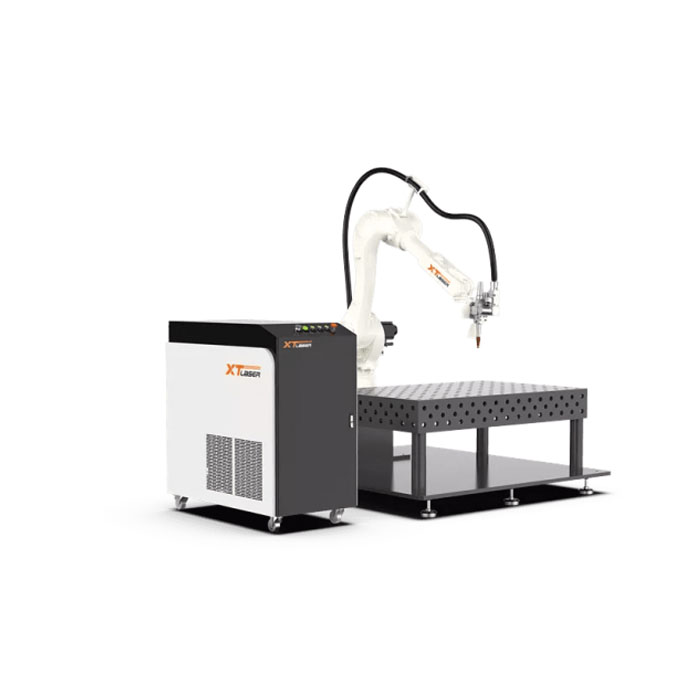Exploring the Innovations in Industrial Laser Welding Machines
2024-07-16
Introduction to Industrial Laser Welding
Industrial laser welding is at the forefront of modern manufacturing, offering significant advancements over traditional welding methods. This technology leverages concentrated laser beams to create high-quality welds with exceptional precision. In this blog, we delve into the latest innovations in industrial laser welding machines and their impact on various industries.
Recent Innovations in Laser Welding Technology
1. Fiber Laser Technology: Fiber lasers have revolutionized the laser welding industry with their superior beam quality and efficiency. These lasers provide high power density, allowing for deeper penetration and faster welding speeds. Fiber lasers are also more energy-efficient and have lower maintenance requirements compared to CO2 lasers.
2. Hybrid Laser Welding: Hybrid laser welding combines laser welding with another welding method, such as MIG or TIG welding. This approach enhances weld quality and increases welding speed, making it ideal for thick materials and applications requiring high-strength joints.
3. Adaptive Laser Welding Systems: Modern laser welding machines are equipped with adaptive control systems that adjust welding parameters in real-time. These systems use sensors and advanced algorithms to monitor the welding process, ensuring consistent quality and compensating for variations in material properties or joint alignment.
4. Remote Laser Welding: Remote laser welding uses scanning optics to direct the laser beam over large areas without moving the workpiece. This technique is highly efficient for high-volume production lines, reducing cycle times and improving productivity.
Advanced Applications of Laser Welding Machines
1. Battery Manufacturing: The growing demand for electric vehicles has spurred innovations in battery manufacturing. Laser welding is crucial in assembling battery cells and modules, providing precise and reliable welds that ensure the safety and performance of batteries.
2. Additive Manufacturing: Laser welding is integral to additive manufacturing processes like selective laser melting (SLM) and direct metal laser sintering (DMLS). These techniques use laser beams to fuse powdered metals, creating complex and lightweight components layer by layer.
3. Precision Engineering: Industries such as watchmaking and jewelry benefit from laser welding's precision and minimal heat input. Laser welding allows for the creation of intricate designs and the repair of delicate components without damaging the surrounding material.
4. Tool and Die Making: Laser welding is used in the tool and die industry for repairing molds and dies. The precision of laser welding ensures that repairs are seamless and extend the lifespan of expensive tooling equipment.
Benefits of Adopting Laser Welding Machines
1. Enhanced Precision: Laser welding offers unmatched precision, enabling manufacturers to produce components with tight tolerances and intricate details. This is especially beneficial in industries where accuracy is critical, such as aerospace and medical devices.
2. Increased Productivity: The high-speed capabilities of laser welding reduce production times and increase throughput. Automation and integration with CNC systems further enhance productivity by enabling continuous and unattended operation.
3. Improved Joint Quality: Laser welding produces high-strength joints with minimal porosity and defects. The focused heat input and rapid cooling result in fine-grained microstructures, enhancing the mechanical properties of the welds.
4. Versatile Material Compatibility: Laser welding can be used on a wide range of materials, including metals, plastics, and composites. It also allows for welding dissimilar materials, expanding the possibilities for innovative product designs.
Future Trends in Laser Welding Technology
1. Artificial Intelligence and Machine Learning: The integration of AI and machine learning algorithms will further enhance the capabilities of laser welding machines. These technologies can optimize welding parameters, predict maintenance needs, and improve process control, leading to higher efficiency and reliability.
2. Green Laser Welding: Green lasers, operating at a shorter wavelength, offer improved absorption in certain materials like copper and gold. This technology is expected to gain traction in electronics and renewable energy sectors, where precise and efficient welding of conductive materials is crucial.
3. Micro and Nano Welding: As industries continue to miniaturize their products, the demand for micro and nano welding will increase. Laser welding is well-suited for these applications, providing the precision and control needed for small-scale manufacturing.
Conclusion
The continuous advancements in industrial laser welding machines are driving significant improvements in manufacturing processes across various industries. From enhancing precision and productivity to enabling new applications and designs, laser welding technology is set to play a pivotal role in the future of manufacturing. As innovations continue to emerge, the adoption of laser welding machines will undoubtedly lead to more efficient, cost-effective, and high-quality production methods.



